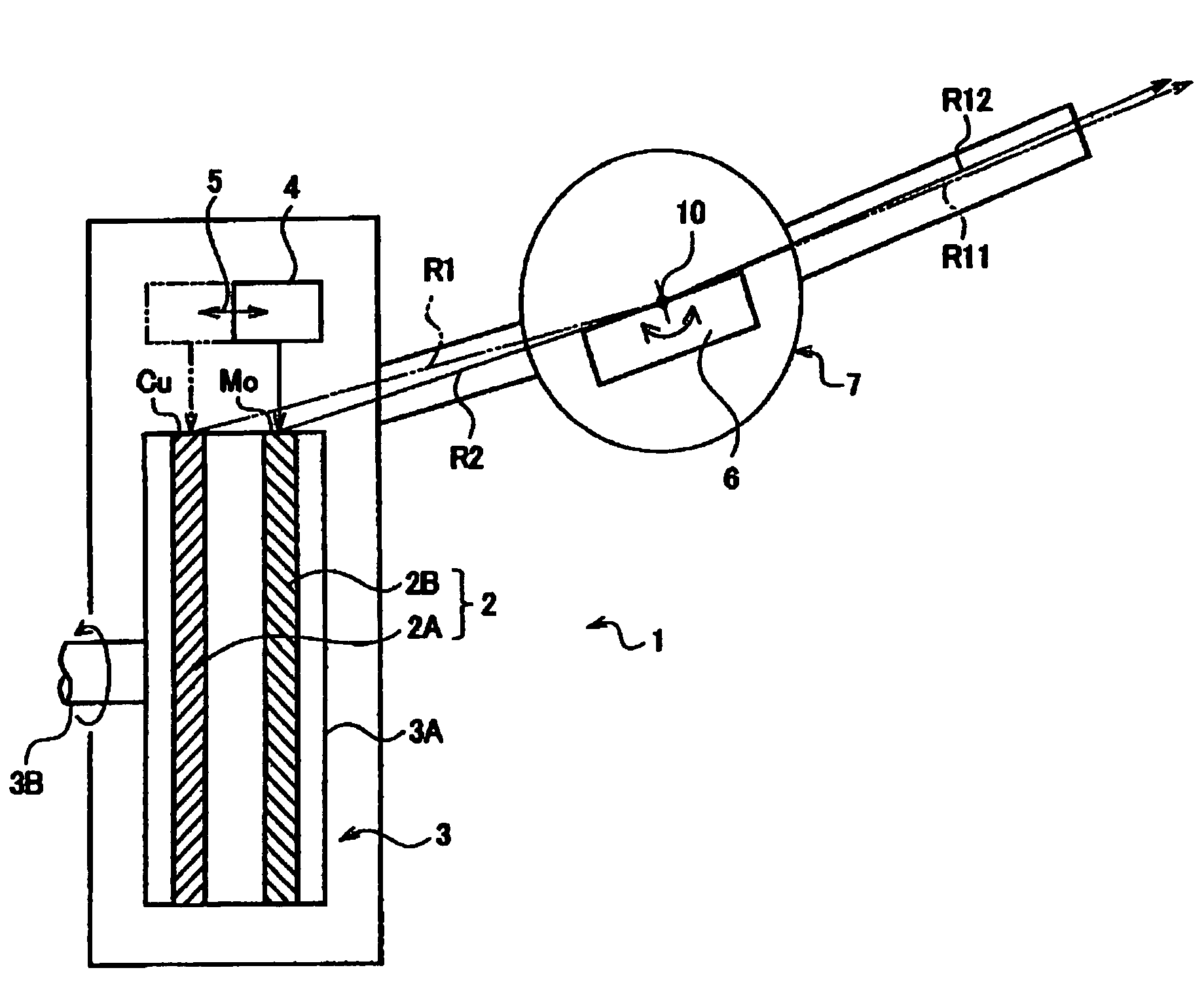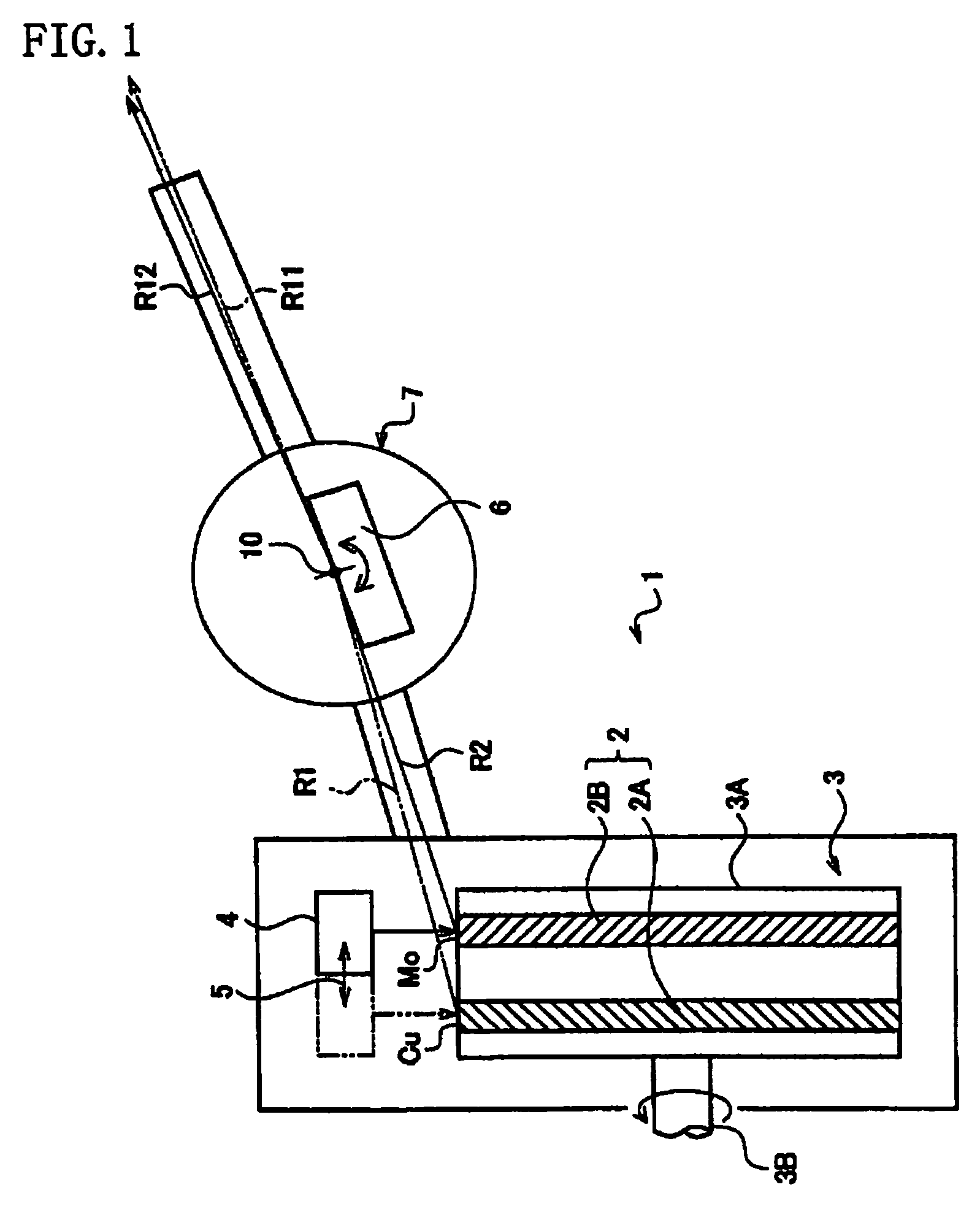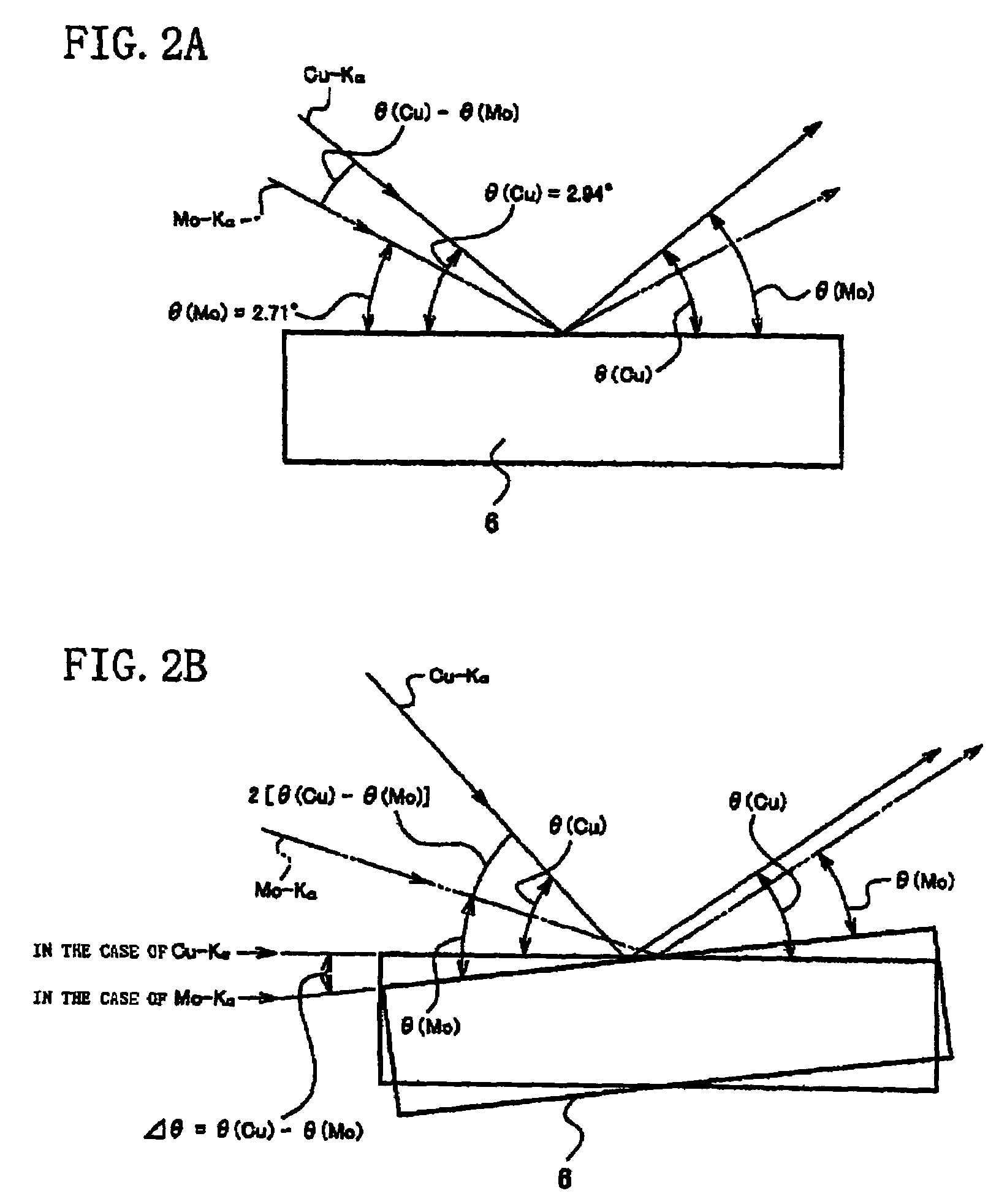X-ray generator and adjusting method of the same
a technology of x-ray generator and adjusting method, which is applied in the direction of x-ray tubes, cell components, nuclear engineering, etc., can solve the problems of increasing manufacturing costs, complicated changes in the work of the anticathode, and difficulty in making the anticathode an easily detachable structure, so as to reduce adjustment and solve differences in the emitting direction. , the effect of easy adjustmen
- Summary
- Abstract
- Description
- Claims
- Application Information
AI Technical Summary
Benefits of technology
Problems solved by technology
Method used
Image
Examples
Embodiment Construction
)
[0028]Preferred embodiment of the present invention will be explained below referring to the drawings.
[0029]FIG. 1 is a schematic diagram of an X-ray generator 1 in the embodiment. The X-ray generator 1 comprises:
[0030]an anticathode unit 3 in which a plurality of anticathode parts 2 (2A and 2B) to emit X-rays by being collided with thermoelectrons are disposed side by side;
[0031]a cathode 4 to release the thermoelectrons towards one of the anticathode parts 2 on the anticathode unit 3;
[0032]a cathode moving mechanism 5 (shown by an arrow) to switch the anticathode parts 2, against which thermoelectrons from the cathode 4 collide, by moving the cathode 4 in an aligning direction of the anticathode parts 2 on the anticathode unit 3;
[0033]an optical element 6 disposed in a taking-out route of the X-rays emitted from the anticathode parts 2, to emit incident X-rays as diffracted X-rays.
[0034]The anticathode unit 3 is formed in a rotary anticathode type, provided with a plurality of an...
PUM
| Property | Measurement | Unit |
|---|---|---|
| angle | aaaaa | aaaaa |
| incident angle | aaaaa | aaaaa |
| structure analysis | aaaaa | aaaaa |
Abstract
Description
Claims
Application Information
 Login to View More
Login to View More - R&D
- Intellectual Property
- Life Sciences
- Materials
- Tech Scout
- Unparalleled Data Quality
- Higher Quality Content
- 60% Fewer Hallucinations
Browse by: Latest US Patents, China's latest patents, Technical Efficacy Thesaurus, Application Domain, Technology Topic, Popular Technical Reports.
© 2025 PatSnap. All rights reserved.Legal|Privacy policy|Modern Slavery Act Transparency Statement|Sitemap|About US| Contact US: help@patsnap.com



